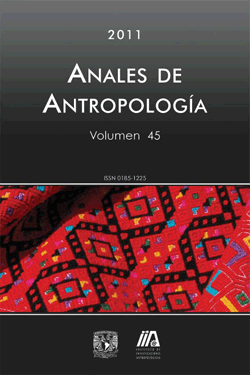Labor control systems and exchange of sumptuary goods in the Teotihuacan corridor towards the Gulf Coast in the Classic period
Main Article Content
Abstract
Teotihuacan represents an anomaly in Mesoamerica because of its size and planification, its corporate organization, the multiethnicity of its population, and for its nature as a great centralizer of sumptuary goods from other regions. In such a multiethnic environment, I ask myself how were the labor and goods managed. Without state storehouses, such as we see in Mesopotamia or the Andean Region in Inca times, Teotihuacan seems more a confederation of neighborhoods, each one with an administrative and ritual center, with nobles from the intermediate elite at the head of these centers, involved in fostering caravans towards the regions from which the sumptuary goods were brought to the metropolis.
In this article I will deal with Teopancazco, a multiethnic barrio center in the southeastern sector of Teotihuacan, which organized caravans towards the Nautla region in Veracruz to obtain specialized labor, cotton cloths, marine animals and other goods; in the intermediate sites where they stopped, such as Xalasco, in Tlaxcala, other goods may have been also incorporated to the caravan: perhaps pigments, cosmetics, foreign pottery, travertine, slate, greenstones, etc.
The multiethnic labor may be individuated through tokens or pottery roundels, formerly addressed as “tejos” which may have been exchanged for tortilla rations in the neighborhood center. When used in the craft production area, these roundels may have served as molds for cutting slate, shells, mica, and other raw materials, perhaps indicators of the status of the person that used them. In Teopancazco, whole roundels dominate; on the other hand, in Xalasco, Tlaxcala, the quarters of roundels are predominant, and thus we suggest that complete roundels may represent the Teotihuacanos, half roundels perhaps the Gulf Coast people, and quarters perhaps people from Tlaxcala.
Downloads
Article Details
Citas en Dimensions Service
Esta revista usa una licencia CC del tipo CC BY-NC-ND 3.0. Se maneja bajo el esquema de acceso abierto, con una licencia Creative Commons Attribution-NonCommercial-NoDerivs 3.0 Unported.
